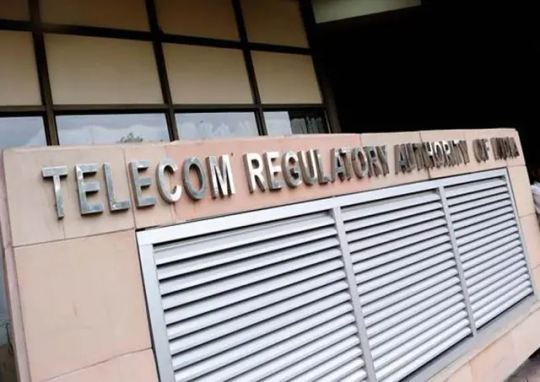#telcos
Text
Optus what are they doing?! Nobody knows but it is so bad you can only read this cartoon on a payphone.
#optus#optus australia#telecommunications#communication#telcos#ausgov#politas#auspol#tasgov#taspol#australia#fuck neoliberals#neoliberal capitalism#anthony albanese#albanese government#eat the rich#eat the fucking rich#telephone#internet#infrastructure#jerkmillionaires#jerkbillionaires#jerktrillionaires#technology#venture capital#capitalism#anti capitalist#capitalist hell#capitalist dystopia#capitalist bullshit
2 notes
·
View notes
Text
Analyzing and Enhancing Call Center Performance in the Telecommunications Sector

Call centers are the primary point of contact between telecommunications firms and their consumers, with a significant impact on customer experiences and satisfaction. In today's competitive environment, boosting call center performance is critical for telecom firms looking to retain consumers, improve service quality, and drive company development.
Call centers use a variety of measures to evaluate performance and track important signs of success. These measures include average handling time (AHT), first-call resolution (FCR), customer satisfaction (CSAT), and net promoter score (NPS). These indicators can provide telecom firms with insights into the efficiency, efficacy, and overall success of their call center operations.
Telecommunications contact centers have several obstacles, such as large call volumes, complicated queries, and rapidly changing technology. Furthermore, call center managers must always strike a balance between maintaining excellent service levels and controlling expenses. The demand for trained operators, simplified processes, and modern technology adds to the complexity of contact center operations.
Comprehensive training programs for contact center workers are vital for providing them with the skills and information required to efficiently handle consumer concerns. Continuous learning opportunities and coaching sessions may keep agents up to speed on product offers, troubleshooting procedures, and customer service best practices. Advanced technologies like artificial intelligence (AI), natural language processing (NLP), and chatbots can help contact centers improve operations and increase productivity. AI-powered systems may automate mundane operations, enhance call routing, and offer agents real-time data to help them make better decisions. Intelligent call routing algorithms that include client preferences, agent availability, and expertise can help to cut wait times and increase customer satisfaction.
Furthermore, streamlining queueing tactics and providing self-service choices can assist reduce call traffic while improving the overall customer experience. Regular monitoring and analysis of performance measures such as AHT, FCR, CSAT, and NPS are critical for identifying areas for improvement and executing focused interventions. Real-time analytics dashboards may help call center managers maximize performance and promote continuous improvement. Encouraging a culture of continuous improvement among the call center staff is critical to achieving performance excellence. Recognizing and recognizing top performers, requesting customer input, and conducting regular performance evaluations may all help to develop an accountable, collaborative, and innovative culture.
In conclusion, call centers are critical touchpoints for consumer interaction and assistance. Analyzing and improving call center performance is critical for providing excellent customer service, fostering brand loyalty, and propelling corporate growth. Telecom companies can position their call centers as strategic assets in a competitive marketplace by investing in training and development, leveraging advanced technologies, optimizing call routing and queuing, monitoring performance metrics, and cultivating a culture of continuous improvement. Prioritizing call center excellence enables telecom firms to deepen customer connections, increase operational efficiency, and achieve long-term success in an increasingly dynamic and customer-centric industry context.
Visit our website https://www.nextgwireless.net.
0 notes
Text
The AI Effect: How Telcos Are Winning with OSS/BSS Intelligence
More than 80% of telecom leaders acknowledge AI's benefits, don’t get left behind!
See how telcos are winning with AI powered OSS and BSS solutions.
Full story here: https://www.avisysservices.com/blog/the-ai-effect-how-telcos-are-winning-with-oss-bss-intelligence/

#AIinTelecom #ArtificialIntelligence #GenerativeAI #GenAI #Telecom #OSSBSS #5G #PredictiveAnalytics #ServiceProvisioning #Agile #Testing #CustomerExperience #IoT #NetworkSlicing #Cybersecurity #DigitalTransformation #AvisysServices #NetworkOptimization
0 notes
Text
Australian Banks Make Record Profits & The Scamming Of Customers Goes On

How can we have a situation where Australian banks are making record profits in the billions and we are getting scammed for billions at the same time? These scams utilise our bank accounts and banks to transfer their ill-gotten gains.
“This underpinned a $2.47bn record annual profit at Qantas, a record $10.2bn profit at Commonwealth Bank and a record $7.4bn profit at ANZ, as well as a string of strong results recorded by Westpac, NAB, Woolworths, Coles and others.”
(https://www.theguardian.com/australia-news/2023/nov/19/australian-banks-in-6bn-share-buybacks-amid-wealth-transfer-from-customers-to-investors)
Is it right and just that these banks declare such enormous profits and do so little to monitor and check the illicit use of their banking services by these scammers. In fact, the banks are making money from the scammer’s use of their services. How are we the Australian people putting up with this? What are our governments and political leaders doing about this travesty?
Why are we the patsies for corporate greed? Australian banks make record profits and the scamming of customers goes on.

Australians Scammed For Billions Whilst Banks & Telcos Make Money From Scammers
Similarly, what are the telcos, the communication carriers doing to halt the endless text messages carrying links to fraudulent sites purporting to be Australian businesses?
“Telstra has announced a $2 billion profit in its latest full-year results. The telco announced on Thursday that profit for the year jumped 13 per cent to almost $2.1 billion while its total income rose to $23 billion.”
(https://www.9news.com.au/national/telstra-profits-2023-financial-year-telecommunications/2cc5c8fb-cf58-44bb-a156-8814a10bea6b)
Yes, more record profits for Australian corporations in 2023. What are they doing about the billions of dollars of scamming taking place via their networks? Shouldn’t we be asking why more is not being done to stop the scammers. Of course, Telstra and Optus make money from the scammers utilising their networks. This completely unacceptable state of affairs has been going for years now.
What is the government doing about this?

Banks Should Be Investing Billions in Stopping Scams
Surely, some of the huge amounts of revenue generated by these banks and telcos in their oligopolies should be invested into stopping the scammers. They seem to think that they have a God given right to profit from our misfortune and do nothing about the holes in their systems. This comes from the lack of competition in the sector. What has the ACCC been doing? Yes, there is a corporate competition watchdog if you didn’t know. However the ACCC has been missing in action as far as the market goes in Australia.
We have one of the greatest concentrations of market power into the hands of the few globally seen. This is why our banks and telcos can set the prices and fees we pay without fear of market repercussions.

Australian Banks Make Record Profits & The Scamming Of Customers Goes On
The ACCC & ATSIC Are Toothless Tigers Looking The Other Way
The ACCC and ATSIC are more gladhanding corporate boy’s clubs than any sort of watchdog. These toothless tigers are too close to the action to actually do anything about transgressions. Their people aspire to being rich and being rewarded with high paying positions in the sector. Don’t rock the boat baby is their favourite tune. The financial realm in Australia is an old boy’s network where looking the other way is akin to a Masonic handshake.
ATSIC generates billions from the fees it charges and rests on its laurels on this basis.

Banks Victim Blaming Aussies Being Scammed
Australians need to start making more noise about being the patsies for the banks, telcos, and scammers to the tune of billions. Corporate Australia turns around and blames the victims. Yes, blame those with the least amount of financial literacy! The low rates of financial literacy in this country have been encouraged by the financial sector so that they can take advantage.
The financial sector in Australia is a corrupt closed shop. Aussie apathy has kept them at it for the duration. It is time to get united and start protesting the travesty being committed by the banks and telcos. Come on let’s make some noise.
Robert Sudha Hamilton is the author of Money Matters: Navigating Credit, Debt, and Financial Freedom.
©WordsForWeb

Read the full article
0 notes
Text
عبد الغني قطايا ، مدير المحتوى الرقمي في منظمة "سمكس" يوضح وضع الاتصالات في #غزة و يشرح ما هي تقنية #e_Sim " التي لجأ لها النشطاء و الصحفيون وأهالي غزة لتجاوز القطع الشامل للهاتف الإنترنت؟مع تحيات #نايلةالصليبي
https://mc-d.co/1vdO
#نايلةالصليبي#digital#مونت كارلو الدولية#technology#تكنولوجيا#naylasalibi#social media#radioshow#gaza#gaza strip#telcos#Israël#اسرائيل#غزة#اتصالات#انترنت
0 notes
Text
Social media, telcos, lobby for 18-24 months to comply with DPDP Act
Social media companies, telecom operators, and Indian startups are set to lobby for a transition period of 18-24 months to fully comply with the Digital Personal Data Protection (DPDP) Act, 2023, citing technological complexities in two clauses, Business Standard has learnt.
Major industry bodies representing local and global companies such as social media companies, big tech platforms, and…

View On WordPress
#Act#API#comply#Digital Personal Data Protection (DPDP) Act#DPDP#Indian startups#lobby#media#months#Social#Social media companies#telcos#telecom operators
0 notes
Text
Fraud! Regulatory Corruption!
Telecom companies should have switched to fiber-optic but pocketed the money!
According to Technology Analyst and Author Bruce Kushnick, over $500 BILLION has been given to Telcos (state telecommunication utility companies, a.k.a. Verizon, AT&T, Century Link, et al) for fiber-optic upgrades to the premises (FTTP) – which was never delivered.
Ana Montes, retired 30-year technology expert from the bay area says, “It’s documented,” that the Telcos were given money to upgrade the networks with fiber-optics, but did not deliver.
#softrevolutionoflove#truth#health#cancer#telcom#5G#fiberoptic#AT&T#fraud#corruption#verizonfraud#verizon#centurylink#telcoscorruption#telcos#fttp
0 notes
Text
New Regulations to Combat Financial Fraud in India with AI Integration by Telecom Operators

On May 1, 2023, Indian telecom operators will have to incorporate artificial intelligence (AI) to address the growing problem of spam messages and calls. The Telecom Regulatory Authority of India (TRAI) has directed telecom companies to implement AI filtering technology to combat the menace of spam calls and messages. This will be a significant step in providing much-needed relief to customers who are tired of receiving pesky calls and fake messages on a daily basis. The introduction of AI filtering technology will enable telecom companies to effectively block spam messages and calls and provide customers with a better user experience.
TRAI’s New Regulations and Telecom Companies' Response
As part of the new regulations, TRAI has called for an end to promotional calls made from 10-digit numbers and for the implementation of a caller ID feature that displays the caller's number and photo. However, some telecom companies such as Airtel and Reliance Jio have expressed concerns about privacy issues and the potential cost of implementing the Calling Name Presentation (CNAP) feature. Vodafone-Idea has already completed regulatory sandbox trials, and the feature is expected to be available to all users soon. Airtel is also in the process of setting up an AI feature to control spam messages and is running trials with a global company. Similarly, Reliance Jio is also expected to roll out a new feature in the near future.
Review of AI Implementation Progress
P D Vaghela, Chairman of TRAI, has said that the progress of the technology will be reviewed on a fortnightly basis. It is important to note that the implementation of AI filtering technology will not only address the problem of spam calls and messages but also significantly reduce financial fraud in the country. The introduction of AI filtering technology is expected to be a game-changer in the telecom industry and will enhance customer satisfaction.
The Telecom Regulatory Authority of India’s new regulations are aimed at combating the rising threat of financial fraud in the country. The incorporation of AI filtering technology will enable telecom companies to effectively block spam messages and calls and provide customers with a better user experience. Telecom companies are already in the process of setting up AI features to control spam messages, and with the new regulations in place, the telecom industry is expected to provide much-needed relief to customers who have been inundated with unwanted communications.
Read the full article
#10-digitnumbers#Airtel#artificialintelligence(AI)#callerIDfeature#CallingNamePresentation(CNAP)#chairmanofTRAI#financialfraud#PDVaghela#privacyissues#promotionalcalls#RelianceJio#spamcalls#spammessages#telcos#TelecomRegulatoryAuthorityofIndia(TRAI)#userexperience#Vodafone-Idea
0 notes
Text
Some telco provided modems & routers are absolute dog shit and its recommended to upgrade it immediately IMO.

#telcos#telecommunications#modems#modem#routers#internet#ausgov#politas#auspol#tasgov#taspol#australia#infotech#information technology#it#i.t.
1 note
·
View note
Text
Airtel to Raise Entry-level Tariff from Rs. 99 to Rs. 155 to All Its Circles

With the latest entry-level tariffs raised to ₹155 by Bharti Airtel Ltd from earlier ₹99 for 18 out of its 22 telecom circles, the Sunil Mittal-promoted organization may extend the same tariff for the rest of the circles as well, according to an industry executive who wished to stay anonymous. The executive also opined that it is only a matter of time before the firm applies the hiked tariff for all the circles. The telecom coverage in India is split into 22 circles so as to align with the boundaries of states.
On 21 November, Bharti Airtel Ltd hiked the tariff for entry-level to ₹155 in Haryana and Odisha, followed by the North-east, Bihar, Himachal Pradesh, Rajasthan, Karnataka, Uttar Pradesh-west, and Andhra Pradesh on 24 November. Then a day later, the same was applied to Mumbai, Chennai, Delhi, Uttar Pradesh-east, Tamil Nadu, Assam, Jammu and Kashmir, Punjab, and West Bengal.
An Airtel spokesperson responded by saying that the step is to provide customers with a better experience. Thus, they have done away with the metered tariff and offered a new entry-level plan of ₹155. It comes with features such as 300 SMS, 1GB of data, and unlimited voice, so the customers will encounter no constraints while using this plan. The plan intends to offer superior value, greater convenience, and flexibility.
An Airtel executive also said that they had expected a higher amount of SIM consolidation or level of churn after the introduction of the plan, but that has not been so. Yet, the company aims to roll the new entry-level tariff to other circles after assessing the results. They believe that customers will adapt to the plan because of unlimited calling, higher data usage, and larger benefits in contrast to the previous tariff of ₹99.
After launching the hiked entry-level tariff, in November the telecom saw 200,000 and 100,000 active subscribers for Odisha and Haryana circles. But in the preceding months from May to October, Haryana’s customer base saw a loss of 300,000, while Odisha’s customer base grew by 70,000. The telecoms have raised the plan rates by 20-25% in November, and the effect is from the correction of rates for the base plans. The move, for now, seems to have generated a favorable number of subscribers for Bharti Airtel Ltd.
Visit: - https://www.jsbmarketresearch.com/news/news-airtel-raises-entry-level-tarrif-rs-99-to-rs-155
Follow our social handles: -
YouTube: - https://youtube.com/shorts/3_ISP7_c6ek?feature=share
Instagram: - https://www.instagram.com/p/CoEwzzLoLrr/?utm_source=ig_web_copy_link
Pinterest: - https://pin.it/34THAv2
Twitter: - https://twitter.com/JSBMarket/status/1620353025020952576?s=20&t=GiIYt5ySBUBMgqDSdlkG5w
#airtel#airteltariff#bhartiairtel#bhartiairteltariff#telcos#telecomcompanies#basetariffs#indiantelecomcircles#pre-paidcustomers#activesubscribers
0 notes
Text
Silent Signals: Navigating the Aftermath of a Catastrophic Attack on Telecommunication Systems

In the interconnected and technologically driven world we inhabit, the telecommunication infrastructure serves as the backbone of global communication. However, the prospect of a catastrophic attack on these systems poses a formidable threat, potentially causing widespread disruption and chaos.
Telecommunication systems, encompassing networks, satellites, and data centers, are susceptible to a range of threats, including cyberattacks, physical sabotage, and natural disasters. The interconnected nature of these systems makes them vulnerable to cascading failures, amplifying the impact of an attack. As our reliance on digital communication deepens, understanding and preparing for the aftermath of a catastrophic event becomes paramount.
A large-scale attack on telecommunication systems can have profound and far-reaching consequences. Communication breakdowns can impede emergency response efforts, disrupt critical services such as healthcare and transportation, and sow confusion and panic among the public. Economic activities may grind to a halt, as businesses heavily depend on reliable communication channels for operations. The potential for social and political instability further underscores the need to address the aftermath of such an attack comprehensively.
Developing resilient telecommunication infrastructure with built-in redundancies is crucial. This involves creating backup systems, diverse communication pathways, and fail-safe mechanisms to ensure that essential services can continue even in the face of an attack. Strengthening cybersecurity measures is essential in preventing and mitigating the impact of cyberattacks on telecommunication systems. Continuous monitoring, regular updates, and collaboration between public and private sectors are critical components of a robust cybersecurity strategy. Given the interconnected nature of global telecommunication systems, international collaboration is vital. Establishing protocols for information sharing, coordinated response efforts, and joint initiatives to enhance global cybersecurity can help minimize the aftermath of a catastrophic attack. Educating the public about potential threats and providing guidance on alternative communication methods during emergencies can help mitigate panic and confusion. Preparedness campaigns can empower individuals and communities to navigate the aftermath of a telecommunication system attack more effectively. Implementing and enforcing robust legislation and regulations regarding telecommunication security can act as a deterrent to potential attackers. Clear guidelines and standards can also facilitate a coordinated response in the aftermath of an attack.
As the world becomes increasingly reliant on telecommunication systems, the potential aftermath of a catastrophic attack cannot be ignored. "Silent Signals" emphasizes the importance of proactive measures, resilience planning, and international collaboration to navigate the challenges posed by such events. By addressing vulnerabilities, strengthening cybersecurity, and fostering a collective commitment to safeguarding our communication infrastructure, we can ensure that the silent signals continue to connect us even in the face of adversity.
Visit our website at https://www.nextelle.net/.
0 notes
Text
Facing network optimization challenges? Discover how Avisys Services' tailored telecom solutions are addressing the biggest pain points for telcos globally.
Let's talk efficiency and innovation!
More details: https://www.avisysservices.com/telecom/

#telecom#telcos#NetworkOptimization#TelecomSolutions#AvisysServices#TelecomOSS#TelecomBSS#OSS#BSS#OSSBSS#TelecomOSSBSS#5GRevolution#TelecomModernization#BSSOSS#TelecomArchitecture#TelecomTrends#DigitalTransformation#NetworkInfrastructure#ServiceProviders#TelecomIndustry#NetworkSolutions#OperationalExcellence#TelecomTech#FutureOfTelecom#CommunicationServices#InternetServices
0 notes
Text
The Evolving Telcos & 5G

Nithya Selvaraj goes through the history of telcos and its natural evolution to 5g technology
Read More. https://www.sify.com/digital-transformation/the-evolving-telcos-5g/
0 notes
Text
How Vietnamese Telcos Can Double Their Revenues

Vietnam's Telecom Market is on a dynamic growth trajectory, with digital advertising spend rising to USD 1.15 billion in 2022 with a Year-on-Year change of 18.5%. Fueled by the National Digital Transformation Program, 5G network expansion, robust mobile penetration (145.8 million connections), and infrastructure enhancements, the telecom sector is set for a remarkable journey ahead.
Leading Telcos in Vietnam, including Viettel, VNPT, Mobifone, Vietnamobile, and G-Mobile, are at the forefront of the industry. They excel in subscriptions, 5G network expansion, and mobile service enhancements. Yet, revenue generation is a pivotal challenge and opportunity in this rapidly evolving landscape.
In this context, moLotus, a mobile video customer interaction platform, a GSM-based technology, is emerging as a potent revenue-generating solution and an all-encompassing answer for Vietnamese Telcos seeking not just survival but resilience and growth. The moLotus technology excels in delivering hyper-personalized, interactive, automated, globally scalable, multimedia messages directly to telco subscribers. No app downloads or data plans needed!
moLotus has established strong partnerships with global telecom giants like Indosat Ooredoo Hutchinson, Celcom, Vodafone, Airtel, Digi, Maxis, and many others. It has a robust presence and a track record of success in countries such as Singapore, Malaysia, India, and Indonesia.
Proven Global Telco Campaigns : https://www.novosol.biz/telco-showcase/
The strategic collaboration with moLotus not only could empower Vietnamese telcos to tap into new revenue streams, navigate challenges, and position themselves for sustainable growth but also propels them into a future of innovative and efficient customer engagement. The moLotus partnership offers Telcos with the Technical Support, Strategy, Marketing Collaterals, Execution, Pre-sales Support, Shadow Marketing and Business Support.
The Vietnam Ministry of Information and Communications (MIC), has introduced the "National Digital Transformation Program by 2025," with an extended vision to 2030. This program is accelerating Digital Transformation by redefining business approaches and offering incentives to drive digital adoption across enterprises, government operations, and manufacturing (Source: GlobalData).
With Vietnam's government actively promoting digital transformation, moLotus is poised to capitalize on emerging digitalization opportunities, enhanced by 5G and overall transformation. It streamlines customer processes, such as payment reminders, loyalty programs, contract renewals, and onboarding. moLotus innovates business models, generating high-margin revenues while keeping costs low, thereby boosting efficiency, speed, and agility.
The rapid growth of Mobile Advertising has presented Vietnamese telcos with a dynamic avenue for revenue generation. According to Statista, mobile advertising spend in Vietnam is projected to reach USD 1.2 billion in 2023, representing a substantial growth of 21.6% from the USD 985 million spent in 2022. However, telcos have yet to fully capitalize on the growing revenue opportunities presented by mobile advertising, making a transition to moLotus a strategic imperative.
Leveraging Telco subscriber data, moLotus targets customers with personalized offers and event greetings, including birthdays, festivals, anniversaries, and more. Campaigns can be customized based on various criteria, including business parameters, languages, demographics, and more, enabling rapid reach to a massive customer base. The technology offers easy interaction options such as SMS, USSD, Call, Web Click, mgram and more.
Subscriber Data Monetization is set to rise considerably in the Vietnamese Telco market between 2023 and 2030. Through moLotus Big Data tools, Telcos can capitalize on insights derived from subscriber actions and preferences, delivering targeted ads, transforming business models, boosting revenues, and enabling informed decisions.
GlobalData's report indicates that voice service revenue is likely to decline in 2023 with decreasing ARPU, as users migrate to OTT platforms. However, moLotus adoption can reverse this trend, potentially uplifting ARPU by 2 to 4%, maximizing Customer Lifetime Value and driving overall revenue growth.
moLotus is disrupting USD 1.7 trillion Global Marketing Spend (Source: PwC) bringing a wealth of expertise in Mobile Advertising, Digital Transformation, Zero-cost Video Interaction, Big Data Analytics, and more. With moLotus steadily penetrating the Vietnamese market, Telcos can seize the opportunity for substantial revenue growth today while building a strong foundation for tomorrow.
#marketing#Vietnam#Vietnamese#advertising#mobileadvertising#mobiletechnology#telecommunication#telecom#telcos#Southeastasia#customerinteractionplatform#moLotus#mobilesubscribers#Vietnamesetelcos#digitaltransformation#ARPU#SubscriberDataMonetization
0 notes
Text
NBS 2022 REPORT: Lagos, Ogun, Kano top league of internet subscribers in Nigeria
NBS 2022 REPORT: Lagos, Ogun, Kano top league of internet subscribers in Nigeria
The National Bureau of Statistics has released its 2022 data report on the highest numbers of subscribers in Nigeria.
According to the data report, Lagos, Ogun, and Kano states lead the list of states in Nigeria as they account for 23.8 per cent of the total Internet subscriber base in the country as of March 2022.
The breakdown of top states by internet subscribers shows that Lagos State, the…

View On WordPress
0 notes
Text
No cash flow relief if 3% floor rate is not removed: Telcos cry foul as spectrum payment floor rate stays
No cash flow relief if 3% floor rate is not removed: Telcos cry foul as spectrum payment floor rate stays
Telecom operators have told the department of telecommunications (DoT) that abolishing spectrum usage charge (SUC) in the upcoming 5G auctions and beyond will be meaningless if the government does not remove the floor rate of 3% on such payments which is applicable on current holdings. The floor was fixed in 2016 to protect government revenues as SUC at that time was lowered as an incentive to…

View On WordPress
0 notes